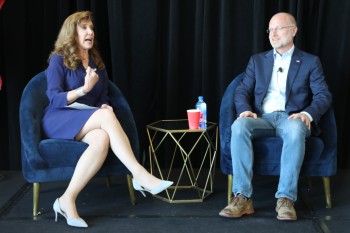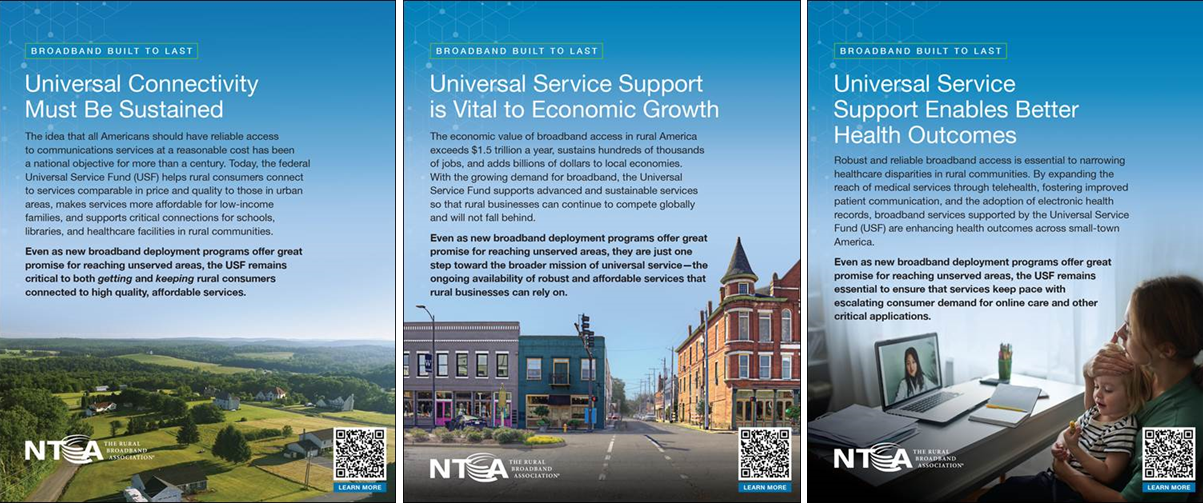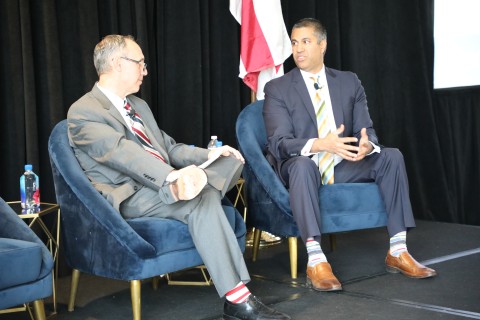It was an exciting time in Washington, D.C., this week as we welcomed over 100 of our key executives to town for our Telecom Executive Policy Summit for one last chance to hear from critical policymakers, network with one another and hit Capitol Hill before Congress leaves town for the holidays.
Additionally, here at NTCA, we kicked off our "Broadband Built to Last" campaign which aims to educate policymakers and the public on the critical role that the Universal Service Fund (USF) plays in getting and keeping rural consumers connected to high quality, affordable broadband service. The campaign, which I am very excited about, features messages promoting the importance of a sustainable USF and will appear in the Axios Tech section, Axios Pro Tech Policy newsletter, Communications Daily and the Politico Tech section throughout November. We also have social media and newsletter resources that we encourage NTCA members to use to share your story with your communities.
As we think about the real-world impact of USF on network deployments and rates, I was greatly struck by the results of a small survey we conducted with our members recently where 61 of our community-based broadband providers from 27 states shared that they would have to cancel over $290 million in planned broadband construction in 2024 – roughly 83 % of their planned investment – if USF support went away altogether. Additionally, this would also cause them to cancel another $243 million in deployments in 2025, representing about 86% of what they have in planning cycles for that year. They estimate that nearly 110,000 rural customers would lose out next year and again in 2025 because of this loss in support. And it’s important to note that these figures are just for these 61 companies. Imagine extrapolating that nationwide.
This affects affordability too. The survey found that, on average, companies would have to raise their rates for 100 MBPS broadband by over $100 per month to make up losses in USF support, assuming they could even do that and still have customers buy the service.
What critical, real impacts our members were able to then share with policymakers this week.
The daylong conference itself was amazing as we had the opportunity to hear from key folks like Joey Wender, who heads up the Department of Treasury’s Capital Project Fund, FCC Commissioner Brendan Carr, Doug Kinkoph, associate administrator of the National Telecommunications and Information Administration’s Office of Internet Connectivity and Growth and Calix CEO Michael Weening. We also heard from Congressional staffers before hearing thoughts on partnerships from two key industry players as they shared wisdom on engaging, checking egos and knowing when to walk away. The conference also featured experts offering tips on how to write compelling grants for federal funding to tell the story of rural connectivity.
Brandon Wales, the executive director Cybersecurity and Infrastructure Security Agency, also joined us to share the increased need of staying vigilant on the cyber front and why information sharing and analysis center (ISACs) such as our CyberShare: The Small Broadband Provider ISAC are such an important part of the toolkit for network providers.
We wrapped the day with an informative presentation on how to submit broadband mapping challenges and by listening to our own Mike Romano having a conversation with former FCC Chairman Ajit Pai, now partner at the private equity firm Searchlight Capital. Did I love hearing the former Chairman put in a nod to how challenging and expensive building broadband networks are and having a real appreciation for cost recovery now that he is on the operator side? Indeed, I did!
All in all, it was a good few days with some stellar networking with NTCA members to boot. I’m so very grateful for our members who put their shoe leather to work for those they serve back home.




